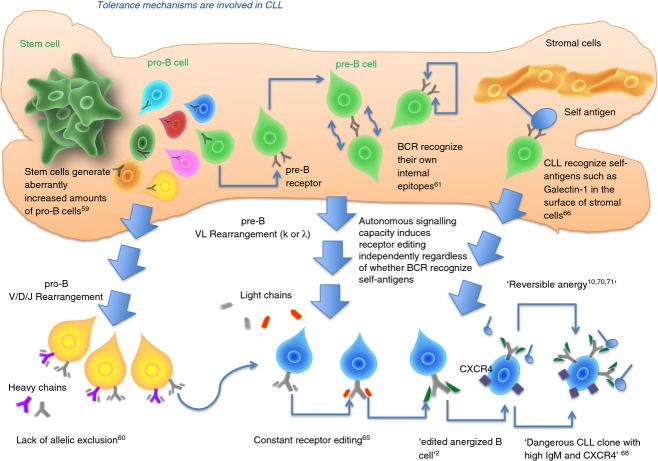Figure 1.
Tolerance mechanisms are involved in chronic lymphocytic leukaemia (CLL). Stem cells from patients with CLL produce an increased amount of pro-B cells. These pro-B cells undergo tolerance in bone marrow. Pro-B lymphocytes derived from patients with CLL continue to rearrange heavy chains and some of them fail to induce allelic exclusion. Some pro-B cells mature into pre-B cells that express B-cell receptors (BCR) that recognize their own BCR and also have an autonomous signalling capacity. These BCR (self-reactive or not) with autonomous signalling capacity induce constant receptor editing, a mechanism involved in inducing immunological tolerance. Despite active receptor editing, B cells that express BCR with autonomous signalling capacity are viewed by the immune system as ‘dangerous cells’ and suffer different degrees of ‘reversible anergy’. These mechanisms are common in monoclonal B-cell lymphocytosis, unmutated CLL (U-CLL) B cells and mutated CLL (M-CLL) B cells. However, M-CLL B cells may be expressing a profound level of anergy compared with U-CLL B cells. Importantly, M-CLL can correct their initial self-reactive BCR during central tolerance mechanisms in bone marrow. U-CLL B cells remain self-reactive B cells.

